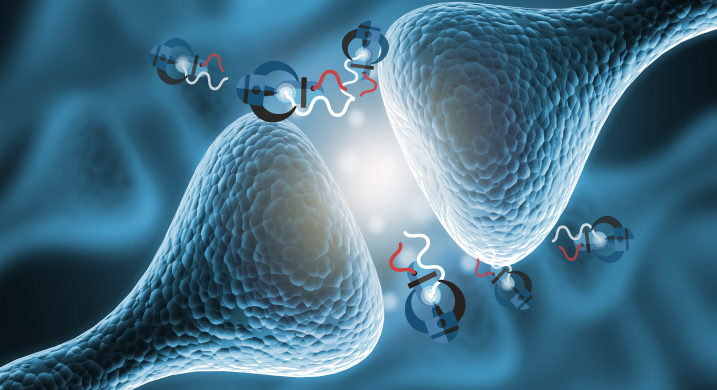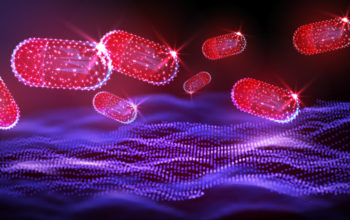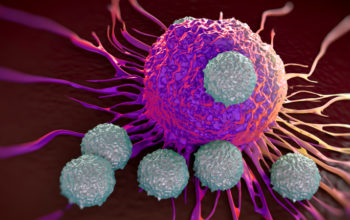
Date: 16th September 2021
Site-1 sodium channel blockers (S1SCBs) are small-molecule drugs that act as potent local anaesthetics. They can provide pain relief without toxic effects on local nerves and muscles however, their systemic toxicity can be severe and their therapeutic index is narrow. Carriers to control their release could help extend their applications although, the hydrophilicity of S1SCBs makes their encapsulation in delivery systems challenging. Now, researchers have designed a biomimetic system using modified peptides that are part of the natural sodium ion channel itself, creating a self-assembly S1SCBs-bearing nanostructure that released local anaesthetics slowly, prolonging their effect and reducing systemic toxicity.
S1SCBs such as tetrodotoxin (TTX) and saxitoxin (SXX) block sodium channels by binding to and occluding the extracellular pore opening of the channel. They are appealing non-opioid local anaesthetics as they are highly potent and don’t cause localised adverse effects such as neurotoxicity or myotoxicity, such is seen with other conventional approaches. However, they are extremely water soluble and exit into the surrounding water in the body, causing severe systemic toxicity which is dose-limiting. Carrier molecules could over come these limitations however, physical encapsulation within hydrophobic vehicles is challenging, occurring with low efficiency, and the initial burst release of drug reintroduces the problem of toxicity.
Now, researchers at Boston Children’s Hospital, US, led by Daniel Kohane report a self-assembling delivery system for S1SCBs whose design was inspired by the specific interactions of S1SCBs with two peptide sequences on the sodium channel. Using peptides modified with hydrophobic domains, these peptides self-assembled into nanofibres that bound to a range of S1SCBs. Injection of S1SCB-carrying nanofibres at the sciatic nerves of rats led to prolonged nerve blockade and to reduced systemic toxicity, with benign local-tissue reaction.
To create the slow-release system, the team began by selecting two peptide sequences, P1 and P2, that simultaneously bind S1SCBs at the binding site, and are part of the actual sodium ion channel. They then modified both peptides with long chains of hydrophobic molecules, which allowed them to self-assemble into nanostructures with the two peptides positioned together, mimicking the way they’re positioned on the sodium channel. The peptide pairs were able to take up the anaesthetic, just as they would on the sodium channel itself, as confirmed by transmission electron microscopy (TEM).
The release kinetics of TTX-nanostructures were also determined, whilst control-nanostructures and free TTX exhibited >83% release of the drug in 12 hours, in contrast sustained release was achieved with the modified peptide nanostructures with <58% of TTX being released in that time period.
But how would the tetrodotoxin-bearing nanostructures work in vivo. To address this the team tested the ability of the formulation to extend the duration of nerve block in a rat model of sciatic nerve block. Whilst free TTX provided a sensory nerve block lasting ~2.2 hours, TTX-loaded into optimised nanostructures at the same concentration, extended the duration of nerve block to ~7.9 hours. At higher concentrations, which were uniformly fatal with free TTX, the sensory block lasted ~15.9 hours.
Systemic toxicity of TTX was significantly decreased by delivery of TTX in the nanostructure, and there were no deficits observed in the non-injected extremities (nanostructures were unilaterally injected). Furthermore, tissue retention of formulations where peptides spontaneously formed nanofibers was significantly prolonged.
Lastly, the team wanted to test the versatility of the system with other S1SCBs, so they loaded the nanostructures this time with STX and dicarbamoyl saxitoxin (dcSTX), which are structurally distinct from TTX but block the same site on the sodium channel. The system toxicity was reduced when STX was loaded into the nanostructures, enabling higher administration of dosing. This resulted in a maximum duration of sensory block increased by almost 7-fold for STX, and 4.8- fold for dcSTX over free versions of the S1SCBs. Neurotoxicity and myotoxicity was also absent in both cases with type of delivery.
Conclusions and future applications
The team here have taken inspiration from nature, biohijacking interactions of S1SCBs with their binding sites on the sodium channels. They have created a synthetic receptor for anaesthetics, that self-assemble, and act as a delivery and slow-release system. Supramolecular assembly into nanostructures, allowed local retention and sustain release of S1SCBs, markedly prolonging nerve block, and significantly reducing toxicity.
The prevalence of chronic pain ranges between 19 and 50% of the world’s population, and its high prominence is the leading cause of disability and disease burden globally. Current treatments heavily rely on opioids, which carry with them substantial side effects and a high risk of addiction. In a bid to find non-opioid alternatives scientists are exploring a range of new therapeutics, such as CRISPR-based gene therapy to treat chronic pain. The strategy here, offers a new advancement in the objective of achieving effective, long-lasting and nonaddictive pain relief, and whilst it is still early days for these anaesthetic-loaded nanostructures the initial data looks very promising.
Furthermore, this system has great potential to advance ongoing efforts to curb systemic toxicity. We have recently reported stimuli-responsive shields that activate immunotherapy just in tumours, optical remote controls for gene transfer, or ultrasound stimulation dubbed sonothermogenetics to direct therapies to specific cell types. ‘SMART’ engineered stem cells, and saline-formulated mRNA therapies have all be designed to minimise off-target effects, and to reduce deadly systemic toxicity. A valued property of the nanostructured system here is the slow-release with sustainable drug control.
In addition, the team envisage their approach could be extended to delivery systems for other receptor-mediated drugs, and have recently patented the approach. Although a more in depth understanding of the molecular basis of drug-receptor interactions would likely be required.
For more information please see the press release at Boston Children’s Hospital
Ji, T., Li, Y., Deng, X., Rwei, A.Y., Offen, A., Hall, S., Zhang, W., Zhao, C., Mehta, M., and Kohane, D.S. (2021). Delivery of local anaesthetics by a self-assembled supramolecular system mimicking their interactions with a sodium channel. Nature Biomedical Engineering.
https://doi.org/10.1038/s41551-021-00793-y


